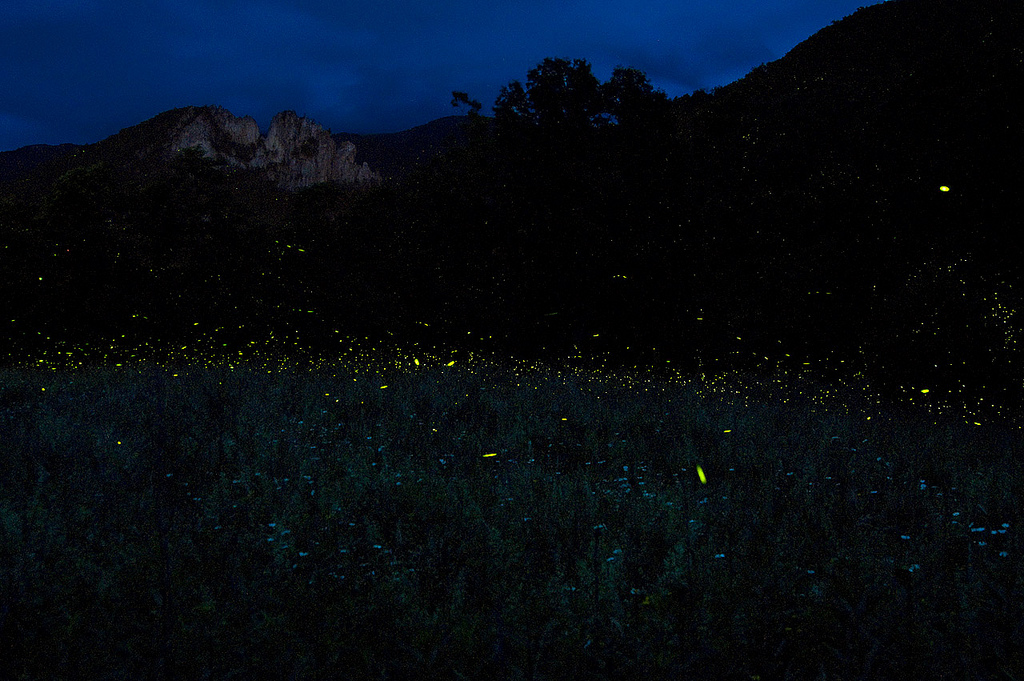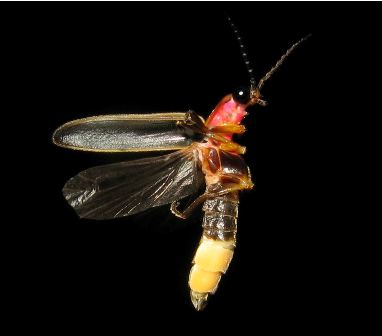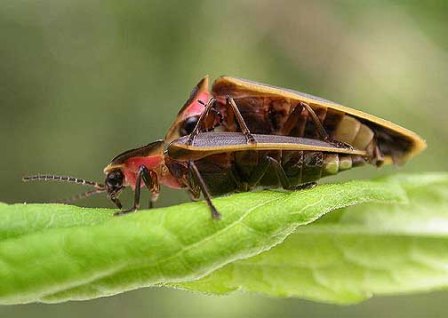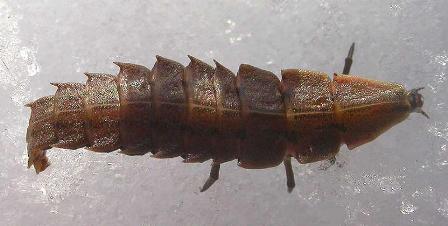
It's Business Time
"Love is not consolation. It is light."
~Friedrich Nietzsche

Adult fireflies come out during the summer months and devote
every night of their short adult lives to courtship. Males will take flight and emit flashes that vary species to
species with respect to color, rate, length, and intensity of
light pulse. The number of flashes and the duration of the
flashes, as well as the female’s response, are important in
recognizing mates. Females usually have short wings or are entirely wingless and fly very little, if at all. They will
usually sit perched on plants, such as the
common blue violet
and
trillium, or grass and respond t o the males from
there.
o the males from
there.
Some species of firefly glow instead of flash while there
are other species that come out during the day, in
which they do not use flashes or glow to attract mates. They use
pheromones instead.
The female will lay her eggs in moist soil, a dead log, or moss.
The dead log could have originated from trees like the
silver
maple,
cottonwood tree, and the
sugar maple. After about two weeks, the eggs hatch and larvae emerge. The
larvae as well as wingless females are referred to as glowworms. The
larvae are flattened with 10 segmented abdomen.. The head is small,
usually retracted, with curved mandibles. In the
northern U.S. fireflies can spend one to three years in their
larval stage, but further south they can complete their
development in a few months. They hibernate as larvae in
chambers formed of soil on or under the ground.
The larvae pupate in the late spring underground in cells
made of soil and emerge a few weeks later as adults.
U.S. fireflies can spend one to three years in their
larval stage, but further south they can complete their
development in a few months. They hibernate as larvae in
chambers formed of soil on or under the ground.
The larvae pupate in the late spring underground in cells
made of soil and emerge a few weeks later as adults.
Next let's visit Interactions.
Back to the homepage